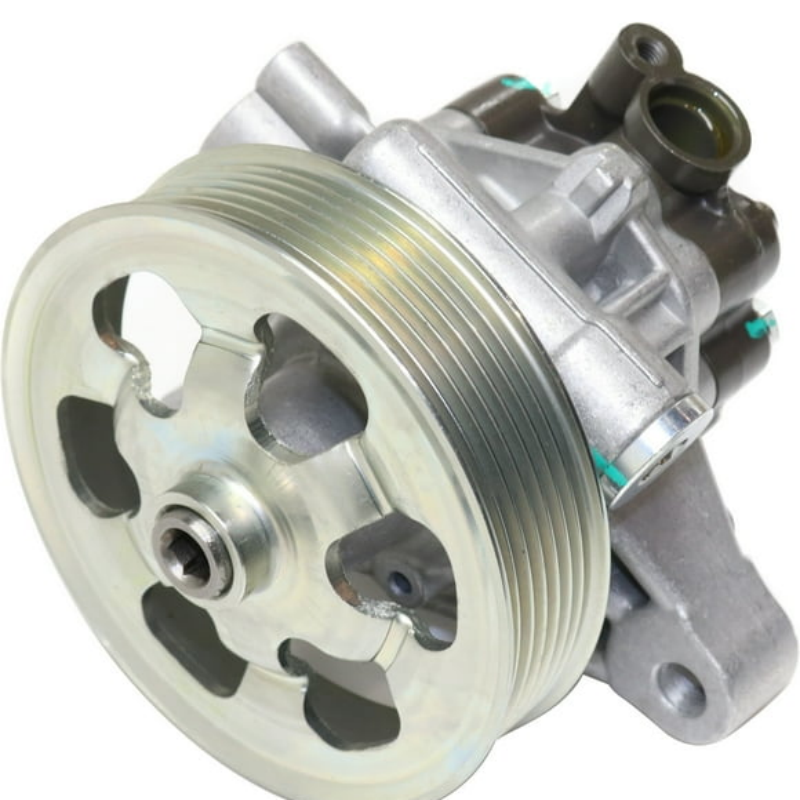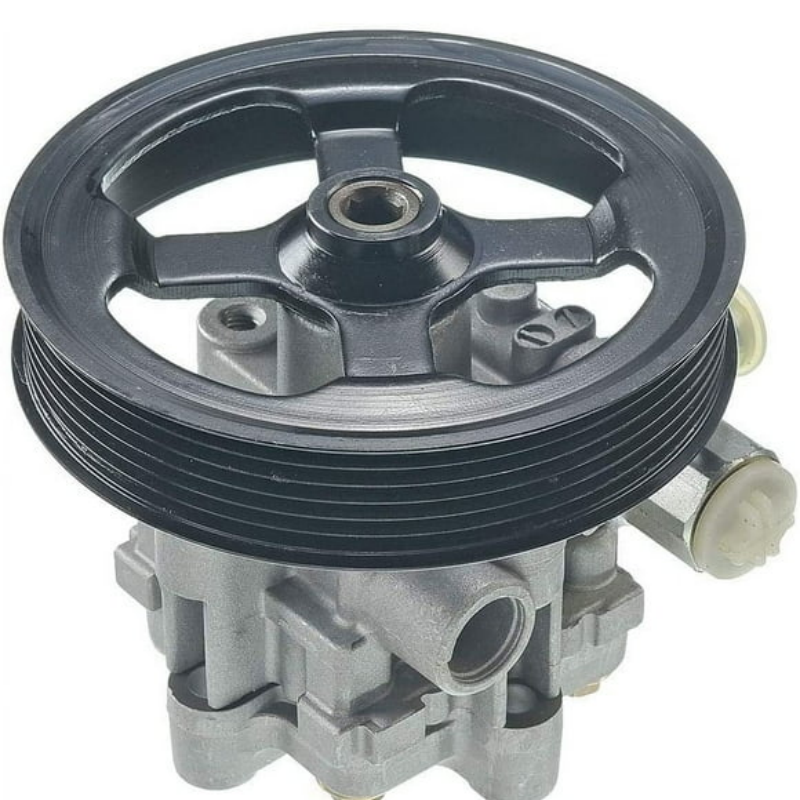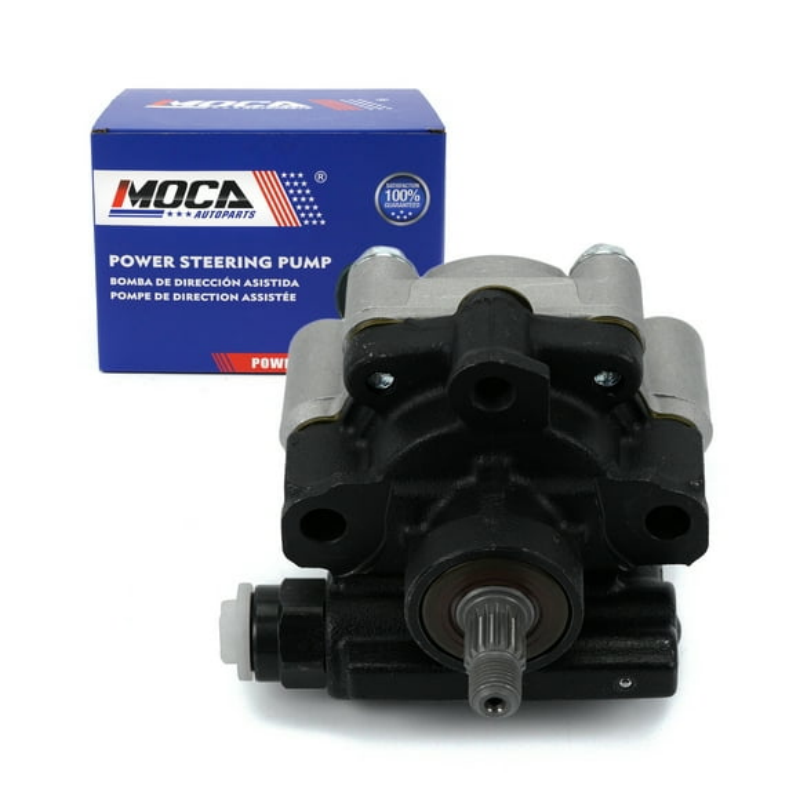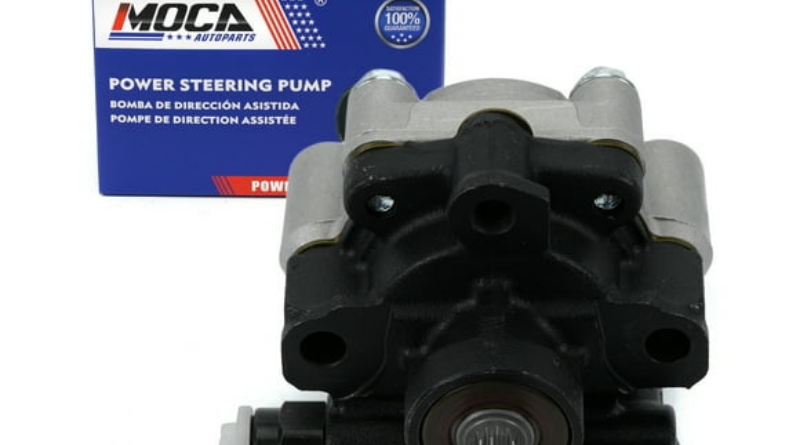Where Does Power Steering Fluid Leak From? The Causes
Power steering is one of the most crucial systems in modern vehicles, providing the driver with increased control and ease of steering, particularly at low speeds or during parking maneuvers. However, like any system in your car, the power steering system can encounter problems, with fluid leaks being among the most common issues. When facing steering difficulties or noticing fluid spots under your car, you may ask yourself: where does power steering fluid leak from? Understanding the potential sources of power steering fluid leaks can help you diagnose the issue quickly and take the appropriate corrective actions. In this in-depth article, we will explore the various components of the power steering system, common causes of leaks, how to identify leaks, maintenance tips, and the potential consequences of ignoring fluid leaks. By the end of the article, you will have a comprehensive understanding of power steering fluid leaks and how to maintain your vehicle effectively.
Understanding the Power Steering System
Before diving into the specifics of power steering fluid leaks, it’s essential to outline how the power steering system works and its vital components.
How Power Steering Works
Power steering systems assist the driver in steering the vehicle by using hydraulic or electric actuators. In hydraulic systems, power steering fluid is pressurized and directed by a pump to amplify the force applied by the driver on the steering wheel. This mechanism allows for less physical effort while steering, making driving more manageable and comfortable.
Key Components of the Power Steering System
The primary components involved in a hydraulic power steering system include:
- Power Steering Pump: Driven by a belt connected to the engine, the power steering pump generates hydraulic pressure. It functions by drawing fluid from the reservoir and directing it to the steering gear.
- Power Steering Fluid Reservoir: This container stores the power steering fluid, which is essential for the system’s functioning. It often features a dipstick to check fluid levels.
- Steering Gear: The steering gear is responsible for controlling the wheels’ direction. It receives the hydraulic pressure from the pump and translates it into steering movement.
- Hoses and Fittings: Flexible hoses transport the pressurized fluid between the pump, reservoir, and steering gear. These hoses are crucial for maintaining fluid circulation in the system.
- Power Steering Rack and Pinion: In most vehicles, the rack and pinion system converts the rotational motion of the steering wheel into linear motion, turning the wheels.
Common Causes of Power Steering Fluid Leaks
Now that we understand how the power steering system works, let’s discuss where does power steering fluid leak from and the common culprits behind these leaks.
1. Worn or Cracked Hoses
Over time, the rubber hoses that transport power steering fluid can become worn or cracked. Exposure to extreme temperatures, environmental factors, and the constant pressure of fluid flow can cause deterioration. If hoses are compromised, fluid can leak out, resulting in decreased hydraulic pressure and impaired steering ability.
2. Loose or Damaged Fittings
Fittings that connect hoses and components can become loose or damaged due to vibration, rough driving conditions, or improper installation. Loose fittings can cause power steering fluid to seep out, leading to a slow leak. In contrast, damaged fittings may result in a rapid loss of fluid.
3. Failed Power Steering Pump
The power steering pump is responsible for generating hydraulic pressure. If the pump develops a fault, such as a damaged seal or loose connections, it may leak fluid. A leaking power steering pump can also indicate the need for replacement or repair.
4. Faulty Steering Gear
The steering gear, which connects the steering wheel to the wheels, can develop leaks at its seals. Over time, wear and tear can cause the seals to break down, resulting in fluid escaping and affecting steering performance.
5. Damaged Reservoir
The power steering fluid reservoir can also leak. Damage from impacts, corrosion, or cracks in the reservoir can lead to fluid loss. If the reservoir is cracked or broken, it may need replacement to restore proper fluid levels.
6. Issues with the Rack and Pinion
The rack and pinion system can develop leaks if the seals degrade. When fluid leaks from the rack and pinion, it can lead to steering issues, making it essential to address this problem quickly.
7. Extreme Temperature Fluctuations
Extreme temperature changes can cause the rubber components in the power steering system, like hoses and seals, to expand and contract. This stress can lead to cracks or leaks, particularly in regions with severe climate changes.
Identifying Power Steering Fluid Leaks
Knowing where does power steering fluid leak from is important, but diagnosing the exact source requires careful observation and inspection. Here’s how to identify a power steering fluid leak:
1. Look for Fluid Spots
The first indication of a power steering fluid leak is often the appearance of fluid spots underneath your car. Hydraulic fluid is typically red or yellow in color, with a thin, oily consistency. Check the area under the vehicle after parking to look for any signs of leaking fluid.
2. Inspect Hose Condition
Examine the power steering hoses for visible signs of wear and tear, including cracks and bulges. Be sure to check the fittings and ends where the hoses connect to the pump and steering gear, as these areas are common locations for leaks.
3. Check Fluid Levels
If you notice a decrease in power steering fluid levels, it could signal a leak. Open the hood and inspect the fluid reservoir. If the fluid level is lower than the recommended mark, consider topping it off. You should also investigate further for any signs of leaks.
4. Evaluate Performance
Unusual steering behavior may indicate a leak. If you notice difficulty turning the wheel, whining noises when steering, or a steering wheel that feels stiff, there may be insufficient hydraulic pressure due to a leak in the system.
5. Use Dye for Detection
If you are unable to locate the leak visually, consider adding a fluorescent dye to the power steering fluid. Using a UV light can help identify small leaks that are otherwise difficult to detect.
6. Seek Professional Assistance
If your initial inspections do not reveal the source of the leak, consulting a professional mechanic may be necessary. They have the tools and expertise to perform a thorough examination of the power steering system.
Consequences of Ignoring Power Steering Fluid Leaks
While it may be tempting to overlook minor power steering fluid leaks, doing so can lead to more significant issues over time. Here’s why you should address the problem promptly:
Safety Risks
Ignoring a power steering fluid leak can compromise vehicle handling and steering control. As hydraulic pressure decreases, steering may become increasingly difficult, creating safety risks while driving. In critical situations, lacking adequate control can lead to accidents.
Increased Repair Costs
If left unaddressed, power steering fluid leaks can lead to damage to other components within the system. Repairs on other parts, such as the power steering pump or rack and pinion, can be costly, especially if the issues escalate due to neglect.
Fluid Loss and Effectiveness
The effectiveness of the power steering system relies on adequate fluid levels. Over time, persistent leaks can lead to significant fluid loss, inhibiting proper steering function. When hydraulic pressure decreases, it can lead to a frustrating driving experience.
Engine Strain
A failing power steering system placed additional strain on the vehicle’s engine. When components do not work as they should, they can create resistance, ultimately affecting fuel efficiency and performance.
Fixing Power Steering Fluid Leaks
Understanding where to look for leaks is step one, but how to fix them is an entirely different process. Fixing power steering fluid leaks typically requires different approaches based on the leak’s source.
1. Replace Worn Hoses
If you’ve identified leaking hoses, replace them with new ones. Ensure you select hoses that match the specifications for your vehicle. Replacement usually requires basic tools and can often be done without professional assistance.
2. Tighten Loose Fittings
Sometimes, simply tightening loose fittings can resolve a power steering fluid leak. Use appropriate tools to gently tighten the fittings without over-torquing, which could damage components.
3. Repair or Replace the Power Steering Pump
If the leak originates from the pump, you may need to replace it entirely, or in some cases, you can opt for a rebuild or repair. Consult with a mechanic if the problem seems complex, as a functioning power steering pump is crucial.
4. Seal Steering Gear Leaks
If you suspect that the steering gear is leaking, you may be able to replace the seals without taking apart the entire unit. However, if the steering gear is extensively damaged, complete replacement may be necessary.
5. Replace the Reservoir
Should the power steering fluid reservoir be at fault, it’s generally a straightforward fix. Remove the old reservoir, install the new one, and reattach the hoses.
6. Preventive Maintenance
Regular maintenance checks can help prevent the occurrence of power steering fluid leaks. Routinely inspect hoses, fluid levels, and connections to identify potential issues early and address them before they lead to more significant problems.
Preventing Power Steering Fluid Leaks
While understanding where does power steering fluid leak from, there are preventative steps you can take to minimize the risk of leaks.
1. Regular Inspections
Perform routine inspections of your vehicle, paying close attention to the power steering system. Look for signs of wear or corrosion. A proactive approach to maintenance can help you catch symptoms before they escalate into problematic leaks.
2. Use Quality Fluids
Always use the recommended power steering fluid specified by your vehicle’s manufacturer. Quality fluids ensure optimal performance and help reduce the likelihood of chemical-related wear on components.
3. Be Cautious with DIY Repairs
If you opt to perform DIY repairs on your power steering system, take great care. Improper installation of hoses or fittings can lead to further leaks or damages, negating any savings from doing the work yourself.
4. Check Alignment and Suspension
Taking care of your vehicle’s alignment and suspension can reduce stress on the power steering system. Regular alignment checks can prevent strain on the components that could lead to potential leaks.
5. Avoid Rough Driving Conditions
Avoiding rough driving, such as hitting potholes or riding over bumps, can prolong the lifespan of your power steering system. Intense driving conditions can lead to premature wear on hoses, seals, and fittings.
Conclusion
Understanding where power steering fluid leaks come from is essential for any vehicle owner. By recognizing the common sources of these leaks, you can address problems promptly, maintaining both safety and performance. Whether it’s worn hoses, loose fittings, or a faulty pump, knowing how to identify and resolve power steering fluid leaks can save you time, money, and the hassle of extensive repairs.
Remember that regular maintenance and visual inspections of your power steering system are key in preventing leaks and other issues. By taking proactive measures, you can extend the lifespan of your vehicle’s power steering system and ensure a smooth driving experience.
Empower yourself with the knowledge you’ve gained from this article to ensure that your car remains a safe and reliable mode of transportation. Keep an eye on your power steering fluid, and don’t hesitate to take action whenever you suspect a leak is developing!
